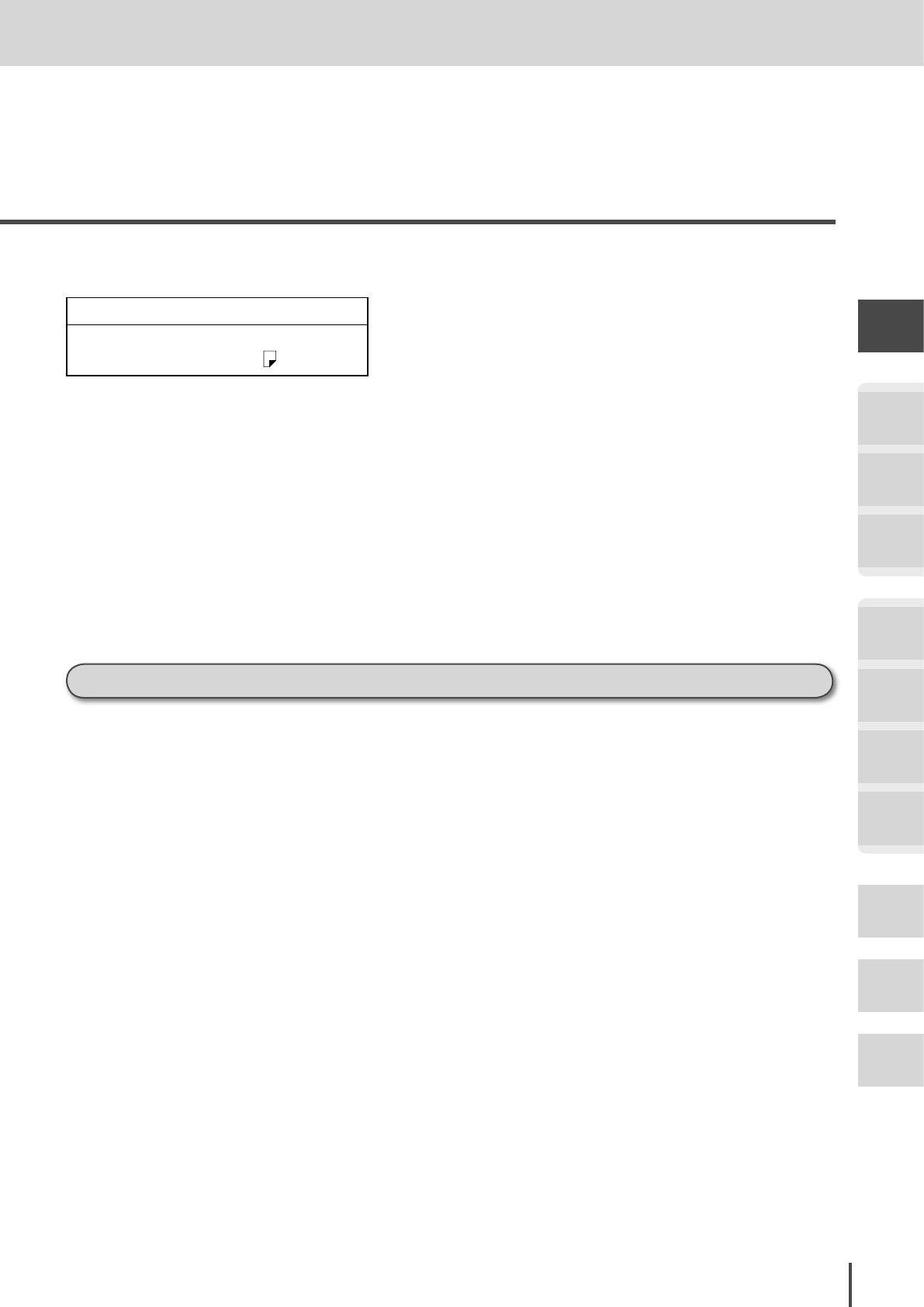
1-27
Getting Started
Getting
Started
COPY
Chapter1
COPY
Chapter2
COPY
Chapter3
FAX
Chapter1
FAX
Chapter2
FAX
Chapter3
FAX
Chapter4
Common
Settings
In This
Case...
Appendix
Loading Paper
■ How to store paper
Acceptable paper, if improperly stored, could cause frequent paper jams, reduced print quality and cause equip-
ment malfunction. Store the paper in a location that meets the following conditions.
· Store in a place with low humidity.
· After opening the wrapping, wrap the unused paper in the same wrapper and store it in the cabinet or a loca-
tion with low humidity.
· Store the paper in a flat location - do not stand it on end.
· Avoid wrinkles, folding, curling, etc.
· Store in a place out of direct sunlight.
Unacceptable paper
Do not use the following papers. Using them could cause poor printing quality, paper jams, or equipment mal-
function.
·OHP film that has already been printed on once
*Even OHP film that was output without printing on it cannot be reused.
· Paper printed on by a thermal printer or an inkjet printer
· Paper that is too thick or too thin
· Paper that is creased, folded, wrinkled, or torn
· Paper for which the wrapping has been open for an extended period of time
· Paper that has absorbed moisture
· Paper with holes for binders or paper with perforated lines
· Paper with surfaces that are too smooth, too rough, or not uniform
· Paper with processed surfaces, such as carbon paper, thermal paper, or pressure sensitive paper
· Paper subject to processing such as gilding or embossing
· Paper of different sizes mixed together
· Irregularly shaped paper (paper that is not rectangular)
· Paper that is fastened by glue, staples, paper clips, etc.
· Paper with labels stuck to it
· Paper with ribbons, hooks, buttons, etc. attached to it
· Paper that is curled or waved
· Art paper, coated paper, coated paper for inkjet printers
■ Duplex printing
Paper size-Paper type
Regular size paper (plain paper only)
11
"
×17
"
, Legal, Letter, Letter


















